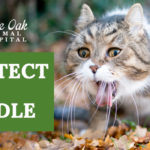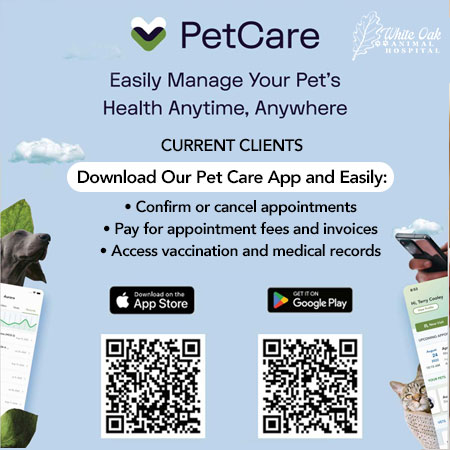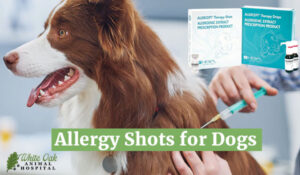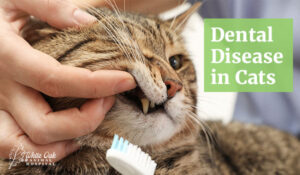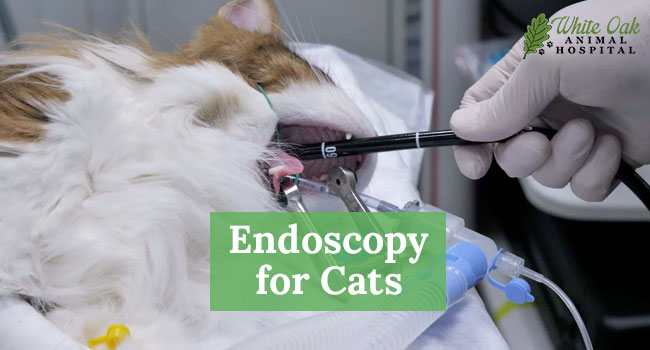
Cat endoscopy is a minimally invasive procedure that allows us to diagnose and treat internal conditions by directly viewing and accessing the inside of a cat’s body. Diagnostic procedures are crucial in feline healthcare, as they allow us to identify and treat conditions that may otherwise go unnoticed. Among these procedures, cat endoscopy stands out as a transformative tool in modern veterinary medicine.
Cat endoscopy is a minimally invasive procedure that allows us to examine the internal structures of your cat’s body, such as the gastrointestinal tract, without requiring major surgery. This technique reduces the recovery time for pets and provides a more transparent, direct view of potential issues affecting your cat’s health.
Over the past few years, technological advancements have made cat endoscopy more accessible and practical, offering a less intrusive option for diagnosing and treating complex medical conditions.
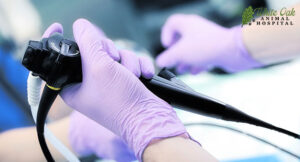
This explains the life-saving potential of cat endoscopy, providing a detailed understanding of how the procedure works, why it may be necessary for your cat, and what to expect before, during, and after it. By the end of this article, you will have a comprehensive understanding of cat endoscopy and how it can significantly improve your cat’s health outcomes.
Life-Saving Power of Cat Endoscopy
Understanding Cat Endoscopy: What It Is and How It Works
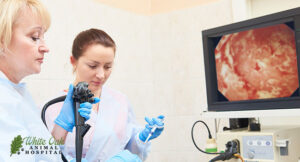 Cat endoscopy is a medical procedure that allows us to view the inside of your cat’s body using a specialized instrument called an endoscope. This procedure is particularly valuable for examining the gastrointestinal tract, including the esophagus, stomach, and intestines. The endoscope, a thin, flexible tube equipped with a light and camera, is gently inserted into the cat’s body, providing real-time images that help us assess the condition of the internal organs.
Cat endoscopy is a medical procedure that allows us to view the inside of your cat’s body using a specialized instrument called an endoscope. This procedure is particularly valuable for examining the gastrointestinal tract, including the esophagus, stomach, and intestines. The endoscope, a thin, flexible tube equipped with a light and camera, is gently inserted into the cat’s body, providing real-time images that help us assess the condition of the internal organs.
There are two main types of cat endoscopies: flexible and rigid. Flexible endoscopes are commonly used for exploring soft tissues, such as the stomach and intestines, as they can navigate the curves and bends of the body. Rigid endoscopes, on the other hand, are used to examine more straightforward areas like the nasal passages or the bladder.
The procedure is performed under general anesthesia to ensure the cat remains still and comfortable. Once the endoscope is in place, we can view the internal structures and, if necessary, take tissue samples (biopsies). This ability to diagnose and sometimes treat issues without invasive surgery makes cat endoscopy an invaluable tool in veterinary medicine.
Why Your Cat Might Need an Endoscopy: Common Reasons
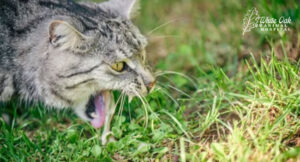 Several medical conditions might necessitate the use of cat endoscopy. Gastrointestinal issues are among the most common reasons we might recommend this procedure. Conditions such as chronic vomiting, unexplained weight loss, or persistent diarrhea often require a closer look inside the digestive system to identify the root cause.
Several medical conditions might necessitate the use of cat endoscopy. Gastrointestinal issues are among the most common reasons we might recommend this procedure. Conditions such as chronic vomiting, unexplained weight loss, or persistent diarrhea often require a closer look inside the digestive system to identify the root cause.
Cat endoscopy is also frequently used to diagnose blockages or foreign objects a cat may have ingested. If a cat is experiencing difficulty swallowing or frequent regurgitation, an endoscopy can help determine if something obstructs the esophagus or other parts of the digestive tract. Inflammatory bowel disease (IBD) and certain types of cancers can also be diagnosed through endoscopy, allowing for early detection and treatment.
In addition to serving a diagnostic purpose, cat endoscopy can also be useful for removing small foreign objects or taking biopsy samples from suspicious areas. This versatility makes endoscopy a preferred option in many cases, as it can provide answers and solutions with minimal impact on the cat’s well-being.
How Cat Endoscopy Differs from Other Procedures
Although they share similarities, cat endoscopy differs from other diagnostic procedures, such as colonoscopy or gastroscopy. While a colonoscopy focuses explicitly on examining the large intestine and a gastroscopy on the stomach, cat endoscopy can cover a broader range of internal examinations.
One key benefit of cat endoscopy is its minimally invasive nature. Unlike traditional surgical procedures that require large incisions, endoscopy involves only a tiny entry point, reducing the risk of complications and speeding up recovery times.
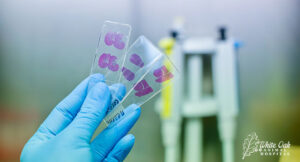 Endoscopy also allows for a more precise and targeted approach. The real-time imaging provided by the endoscope enables us to identify abnormalities or issues that might not be visible through X-rays or ultrasounds. Cat endoscopy is preferred over these other methods in some cases because it allows tissue samples to be taken immediately if something suspicious is found.
Endoscopy also allows for a more precise and targeted approach. The real-time imaging provided by the endoscope enables us to identify abnormalities or issues that might not be visible through X-rays or ultrasounds. Cat endoscopy is preferred over these other methods in some cases because it allows tissue samples to be taken immediately if something suspicious is found.
Cat endoscopy offers a thorough examination and minimal invasiveness, making it a valuable diagnostic tool in modern veterinary medicine. Whether used for diagnosis, treatment, or both, endoscopy often provides more accurate results with less stress on the patient.
Potential Risks and Complications of Cat Endoscopy
While cat endoscopy is generally considered safe, it is not without risks. The most common risks include reactions to anesthesia, minor bleeding, and, in rare cases, infection. However, these risks are relatively low, especially when an experienced veterinarian performs the procedure. The benefits of obtaining a clear and accurate diagnosis often far outweigh the potential downsides.
We take several precautions to mitigate these risks. Before the procedure, a thorough pre-operative assessment is conducted to ensure your cat is a good candidate for anesthesia. During the procedure, the cat is closely monitored to ensure they remain stable and any signs of distress are promptly addressed. The cat will be observed for any signs of complications post-procedure, and appropriate care will be provided as needed.
While cat endoscopy has some risks, they are minimal and well-managed in a professional veterinary setting. The procedure’s ability to provide detailed insights into a cat’s health makes it a valuable diagnostic tool that can lead to life-saving treatments.
Preparing Your Cat for an Endoscopy: What You Need to Know
Preparation for a cat endoscopy is crucial to ensuring the procedure goes smoothly. Typically, we will provide specific instructions on how to prepare your cat. These usually include fasting your cat before the procedure to ensure the stomach is empty. This helps get more precise images and reduces the risk of complications.
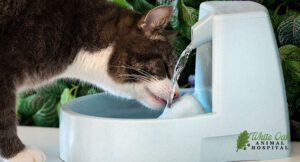 Sometimes, we may advise on hydration and administering necessary medications before the procedure. Following these guidelines carefully minimizes anesthesia risks and ensures the best possible outcome.
Sometimes, we may advise on hydration and administering necessary medications before the procedure. Following these guidelines carefully minimizes anesthesia risks and ensures the best possible outcome.
On the day of the endoscopy, your cat will be admitted to the clinic, where they will be prepared for the procedure. Our team will monitor your cat closely throughout the process, from administering anesthesia to completing the endoscopy. Following the procedure, your cat will be kept under observation until they recover from the anesthesia, and you will be given detailed post-procedure care instructions to follow at home. Proper preparation is key to a successful cat endoscopy, ensuring the procedure is as safe and effective as possible.
The Results: What Cat Endoscopy Can Reveal
Cat endoscopy can reveal a wide range of medical conditions that may not be easily diagnosed through other means. For example, the procedure can uncover blockages in the digestive tract, ulcers, tumors, or areas of inflammation that might be causing your cat’s symptoms. In cases of chronic gastrointestinal issues, endoscopy can help pinpoint the exact cause, whether it’s IBD, cancer, or another condition.
 The ability to take biopsy samples during the procedure is another significant advantage. These samples can be analyzed to provide a more precise diagnosis, crucial for determining the most effective treatment plan. In some cases, the results of an endoscopy can lead to immediate treatment, such as removing a foreign object or applying medication directly to the affected area.
The ability to take biopsy samples during the procedure is another significant advantage. These samples can be analyzed to provide a more precise diagnosis, crucial for determining the most effective treatment plan. In some cases, the results of an endoscopy can lead to immediate treatment, such as removing a foreign object or applying medication directly to the affected area.
The insights gained from cat endoscopy are invaluable in guiding treatment decisions and improving outcomes. Whether confirming a diagnosis or revealing an unexpected condition, the results of an endoscopy often provide the clarity needed to move forward with a treatment plan.
Post-Endoscopy Care: Ensuring a Smooth Recovery
Proper post-procedure care ensures a smooth recovery after a cat endoscopy. Most cats recover quickly from the procedure, but monitoring them closely for any signs of discomfort or complications is crucial. We will provide specific instructions on how to care for your cat once it returns home, including any dietary restrictions or medications that may be necessary.
In the first few hours after the procedure, your cat may be groggy from the anesthesia and need a quiet, comfortable resting place. It’s normal for your cat to have a reduced appetite for a short period, but they should return to their regular eating habits within a day or two. Contact us immediately if your cat shows signs of persistent vomiting, lethargy, or any unusual behavior.
Follow-up visits are often recommended to ensure that your cat is healing correctly and to review the results of any biopsies taken during the endoscopy. Continuous monitoring and care are key to a successful recovery, helping to ensure that any issues are promptly addressed and that your cat returns to full health as quickly as possible.
Cat endoscopy is a powerful diagnostic tool that can significantly enhance your cat’s chances of receiving an accurate diagnosis and effective treatment. Understanding its benefits lets you make informed decisions about your pet’s health, ensuring it gets the best care possible. At White Oak Animal Hospital, we are dedicated to your cat’s well-being and offer advanced integrative options not widely available elsewhere.
is a powerful diagnostic tool that can significantly enhance your cat’s chances of receiving an accurate diagnosis and effective treatment. Understanding its benefits lets you make informed decisions about your pet’s health, ensuring it gets the best care possible. At White Oak Animal Hospital, we are dedicated to your cat’s well-being and offer advanced integrative options not widely available elsewhere.
With over 28 years of experience, our team specializes in providing comprehensive care, including Traditional Chinese Veterinary Medicine (TCVM) Telemedicine consultations tailored to meet your pet’s unique needs. If you believe your cat may require an endoscopy, we strongly encourage you to visit White Oak Animal Hospital. Our commitment is to deliver the highest standard of care, utilizing cutting-edge techniques like cat endoscopy to safeguard your pet’s health.
Frequently Asked Questions
Is cat endoscopy painful for my pet?
No, cat endoscopy is not painful. The procedure is performed under general anesthesia, so your cat will be asleep without discomfort. After the procedure, your cat may experience mild soreness, but this typically resolves quickly.
How long does it take for a cat to recover from endoscopy?
Recovery time from a cat endoscopy is usually short. Most cats are back to their normal activities within a day or two. Following your vet’s post-procedure care instructions ensures a smooth recovery.
Can all veterinarians perform cat endoscopy?
Not all veterinarians are equipped to perform cat endoscopy. It requires specialized training and equipment. Choosing a veterinary clinic with experience and expertise in this procedure is essential, such as White Oak Animal Hospital.
How soon will I get the results from a cat endoscopy?
Your veterinarian can often provide preliminary results immediately after the procedure. However, if biopsies or further testing are needed, the full results may take a few days to arrive.
Related Posts
-
What Every Pet Owner Should Know About Pet Allergies
Whether human or pet, allergies usually prove to be a complicated, and sometimes frustrating, topic.…
-
Cat Diarrhea and Vomiting Herbal Remedies
Cat diarrhea and vomiting can be alarming for pet owners. If your pet vomits more…
-
What Are The Common Types Of Cat Cancer?
Cat cancer is an unfortunately common pet malady. Pets develop cancer for a variety of…
-
Cat Liver Problems and Herbal Solutions
Cat liver problems are extremely common. Firstly, the liver is important for many bodily functions.…


